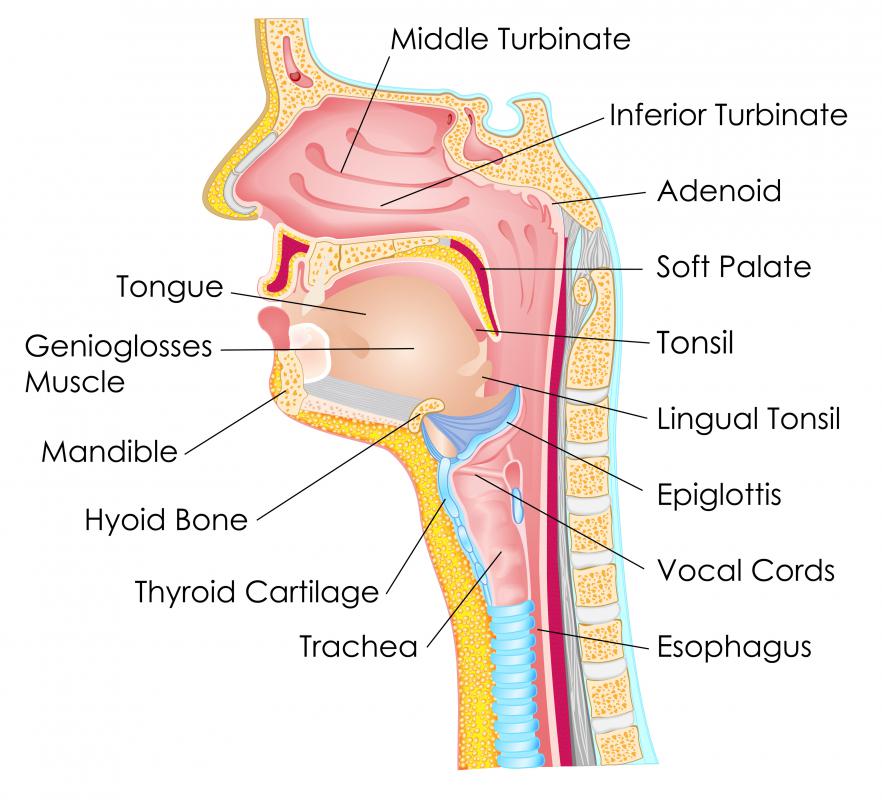At WiseGEEK, we're committed to delivering accurate, trustworthy information. Our expert-authored content is rigorously fact-checked and sourced from credible authorities. Discover how we uphold the highest standards in providing you with reliable knowledge.
What is an Inferior Alveolar Nerve?
The inferior alveolar nerve (IAN), also called the inferior dental nerve (IDN), is a nerve that runs through the lower jaw, or mandible. It branches off to innervate the bottom premolar, canine, and incisor teeth, as well as the chin, gums, and lower lip. The term innervate refers to the supplying of nerves to a body part.
The inferior alveolar nerve begins at the mandibular foramen, a hole toward the back of the lower jaw, where it branches off from the mandibular nerve. The mandibular nerve, in turn, is the third, bottommost branch of the trigeminal, or cranial nerve, which controls most of the sensation and motion of the face. As the IAN traverses the mandible, it sends a branch called the mental nerve through the mental foramen, another hole in the mandible, to innervate the premolar teeth, the chin and the lower lip. The inferior alveolar nerve then continues past this branching point to supply nerves to the bottom canines and incisors.

A nerve consists of axons, dendrites, Schwann cells, and other supportive structures that are bundled and sheathed into a cord-like structure. Nerves deliver signals between the nervous system and other organs so that the body can sense and react to stimuli, such as pressure or temperature. They are divided into two groups by function: the sensory, or afferent, group and the motor, or efferent, group.

Nerves may be afferent, efferent, or a mixture of the two. Efferent nerves take impulses away from the nervous system and send motor signals to the body’s organs, for example to tell a muscle to move. Afferent nerves take impulses toward the central nervous system and transmit sensory signals, such as pain from pressure receptors. The IAN is an afferent nerve, supplying sensation to the teeth, gums, chin, and lower lip. For this reason, dentists often anesthetize this nerve during dental procedures that could induce pain and require numbing of the front part of the lower jaw.

Blocking the inferior alveolar nerve entails an injection of a local anesthesia to prevent pain in a particular area. The patient remains conscious during the procedure. The exact location of the injection varies depending on the site targeted for numbing. A dentist may inject the anesthesia at the mandibular foramen, located in the ramus, where the back of the lower jaw forms a right angle. This blocks sensation in the lower premolars, canines, and incisors, and the mental nerve serving the chin and lip. In addition to the IAN, anesthesia injected near the mandibular foramen will also block the lingual nerve, supplying sensation to the tongue.

An injection of anesthesia above the mandibular foramen on the ascending ramus will numb a greater area. In addition to the inferior alveolar nerve, this block affects the buccal nerve which supplies sensation to the cheek and the second and third molar. This is called a Gow-Gates block or a V3 block.
AS FEATURED ON:
AS FEATURED ON:














Discuss this Article
Post your comments